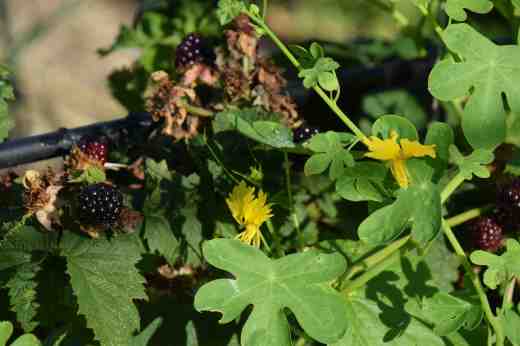Canary creeper makes me smile
It has been a few years since I last grew canary creeper (Tropaeolum peregrinum) but I am glad that this year I made the (minimal) effort. Tropaeolums include some very choice perennials, as well as the ubiquitous ‘nasturtium’ which I simply can’t manage to love, and this annual from western South America, has much of the charm of its rarer cousins plus the ease of growth of nasturtiums.
It is a hardy annual that can be sown direct where it is to grow in April or May or started earlier under glass which is what I did. The early shoots are thin and delicate and give no hint of the rampageous growth that will follow as long as slugs and snails do not devour them. But once it gets into its stride it romps away up any support, gripping with its leaf stalks. In good soil it can easily exceed 2m high and it flings shoots sideways too. I planted mine up the arches to share the space with the blackberries. This is not the wisest idea because I really need to cut out the fruited blackberry shoots in September and the canary creeper will prevent this but I can do it later after frost has dissolved the creeper.
In the meantime I will enjoy the pretty flowers and cute foliage of the canary creeper. The flowers are not huge and it takes a bit of imagination to see the resemblance to a canary. But the fringed flowers, in sunny yellow, speckled with gold and the two large, reflexed petals are bird-like if you view them sideways so the spur at the back of the bloom forms the body and head of the bird.
It will flower for many months with no special care and is something different and interesting that is easy to grow. In most cases it will self seed to some extent too.
Geoff’s rating
9/10
Garden rating
8/10



9/10, high praise indeed. You might be interested to know the ordinary Nasturtium leaf plus a few seeds make great pesto for those who don’t have shelter required for Basil! Only trouble is it’s quite late season.
Well not as late season as basil! Nice idea 🙂